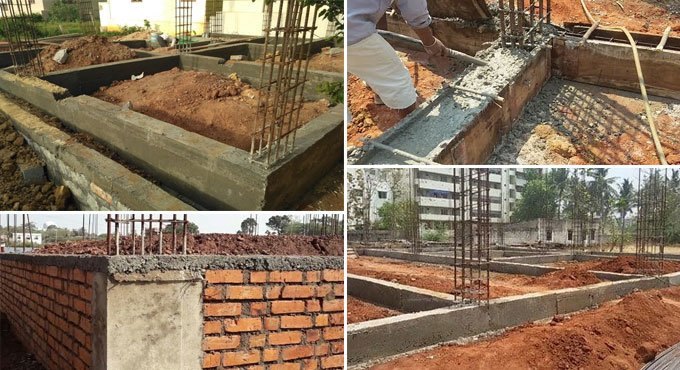
Benefits of plinth beam and it?s standard height in residential building
Plinth beam belongs to an RCC member. The objective of plinth beam is to detach the superstructure and the substructure. Besides, it operates as a tie beam to retain columns, walls in exact position.
Superstructure is located over ground level that comprises of columns, beams, slabs, masonry walls etc., Substructure is located under ground level that consists of foundation.
Benefits of Plinth Beam In House Construction: Plinth beam provides the following benefits -
To sustain the Masonry load at ground floor level: Plinth beams are constructed to bear the dead weight of the masonry wall (brick/block wall over it) on ground floor level.
Hold back backfilled soil: Houses are normally built up 150-300 mm over the adjoining road level(s). Plinth will function as a retaining structure for the compacted soil suitable for filling the empty space from foundation level to top of plinth.
To manage/circumvent differential settlement: Foundations are exposed to differential settlement if the soil underneath is not compacted perfectly. A differential settlement will produce cracks in the masonry walls. Plinth beam belongs to an integral structural member and it also facilitates minimizing the differential settlement in the structure.
To function as a Tie-beam: Load bearing strength of the columns is based on slenderness ratio. Slenderness ratio originates from unsupported length of column to cross sectional area of column.
If the length is raised, the slenderness ratio will be increased which reduces the load bearing strength of the building. In order to lessen effective length of column, tie beams are arranged and in such a situation if foundation is very deep, then RCC plinth beam should be arranged. For foundations below or equal to 6 feet, plinth also functions as a tie beam.
Standard Height Of Plinth: Plinth level should be over the nearby road level to prevent penetration of water in the rainy season.
Sometimes, Local municipalities re-carpet the prevailing roads devoid of taking off old road strata at the time of repairing or building up roads. In such cases, the adjoining properties may proceed under ground level that is not recommended both for practical purposes and for vastu.
To resist drainage water or storm water penetrating the house from outside, plinth is developed in such a manner that the top portion of the plinth remains over road level.
When the plinth is built up extremely high over the road level, then the adjoining parking area level will also be raised and problems will be created.
In which only 3-4 stairs are necessary to arrive at plinth level and bikes, cars can be easily driven to parking and even during rainfall it will safeguard the property from storm and drainage water.
Because of these issues, plinth height should be maintained properly i.e. neither too high nor too low.
The standard plinth height should be 1.5ft to 2ft high as compared to road level.


